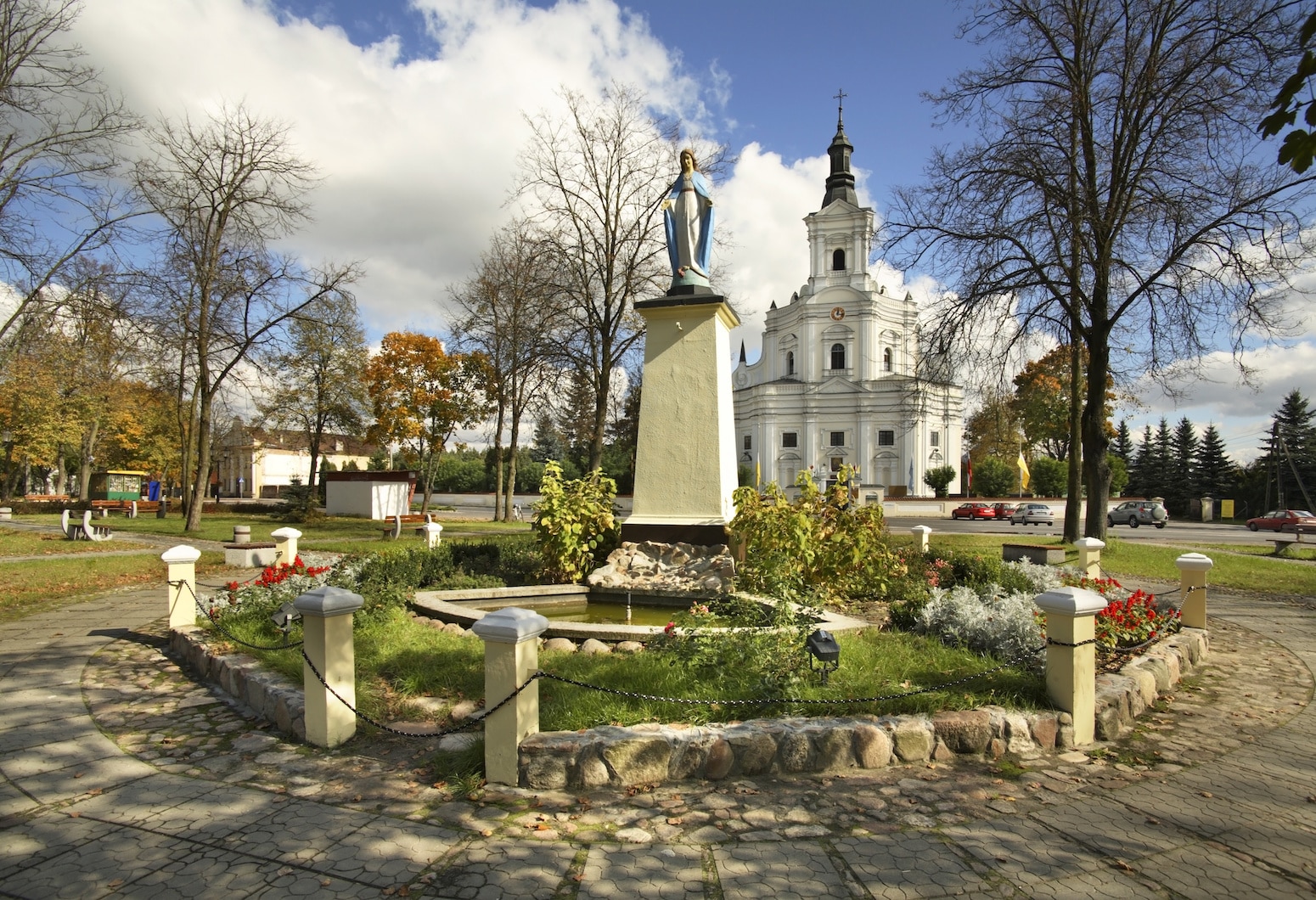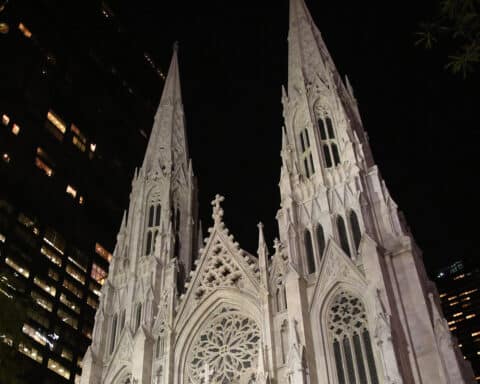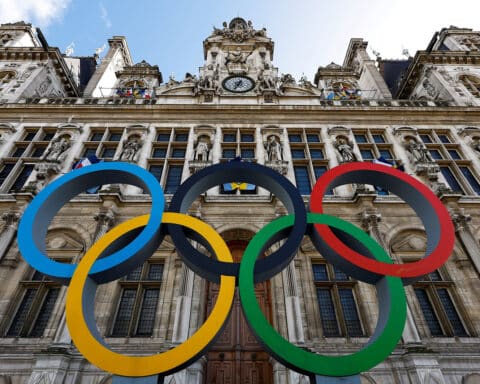(OSV News) — Of dozens of images and statues of Mary across the globe coronated with papal crowns, one in Poland clearly has the most bracing story. The image was most probably stolen from the pope by one of Poland’s noblemen many centuries ago. Now, it’s a symbol of unity in a region troubled by risks of war.
“It was Cardinal Karol Wojtyla, future Pope John Paul II that called Our Lady of Koden ‘Mother of Unity.’ He was visiting our sanctuary many times,” Father Pawel Gomulak, spokesman for the Missionary Oblates of Mary, the religious order that looks after the Koden sanctuary in eastern Poland, told OSV News.
“But apart from big unifying miracles of Our Lady, especially in ecumenical terms, many married couples come here and their bonds are strengthened, which counts for endless little miracles,” he said.
The story of Our Lady of Koden
The story of Our Lady of Koden starts as early as the times of the apostles. St. Luke himself allegedly carved the statue of the Blessed Mother in wood after Jesus’ death. In the first centuries of the Church, the figure found her way to Constantinople, the capital of the Christian Orient. It was there that the Benedictine monk Gregory, the pope’s representative at the caesarian court, prayed before St. Luke’s Our Lady. When he became the successor of Peter as Gregory I, known today as St. Gregory the Great, he brought the statue to Rome.
Sometime toward the end of the sixth century, a Spanish archbishop, St. Leander of Seville, was staying in Rome. “A great piety of bishop Leander and his care for the orthodoxy of the Spanish people have made him ask the Holy Father to give to Spain the miraculous statue of the Gregorian Madonna. It is not difficult to imagine Gregory’s sorrow because of the separation from his beloved statue,” Koden sanctuary wrote on its website. The statue is today known as Our Lady of Guadalupe in Extremadura (Guadalupe is a river located in that Spanish region).
The pope agreed to the bishop’s request but only after he had a copy of it made. Up to the 17th century, the image was stored in Rome in the papal household.
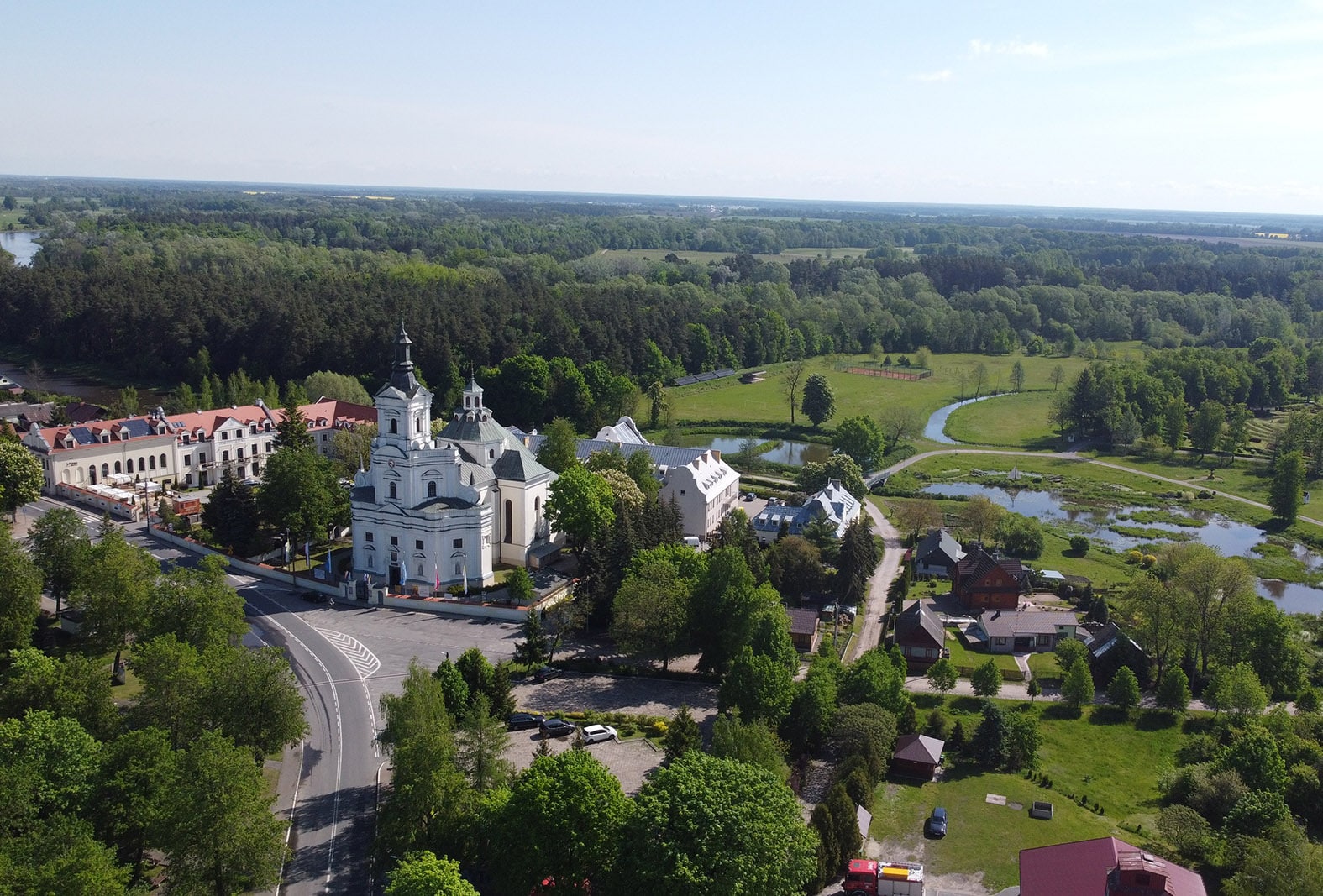
Polish prince’s miraculous healing
In 1629, Polish prince Mikolaj (Nicolas) Pius Sapieha, the owner of Koden estate, started the construction of a brick church in the town’s market square, close to the wooden St. Anna’s parish church. When the new place of worship was being built, he fell severely ill. The consequences of his disease probably included a paralysis of the body, and “total indifference towards all,” according to Koden website, which today would be diagnosed as depression.
His wife advised the prince to go to Rome and ask God to be healed. The paralyzed Sapieha took on the challenge of a long, difficult and dangerous pilgrimage.
“There he prayed in the papal chapel in front of an image of what was then called Our Lady of Guadalupe, that Guadalupe in Spain, also called the Gregorian Blessed Mother. And he was healed. As a consequence of his miraculous healing, he wanted to take the image with him,” Father Gomulak said.
The pope, Urban VII, refused the request.
But Sapieha immediately and completely fell in love with the image. “It was a love story,” said Father Marcin Szwarc, a Missionary Oblate of Mary. “And you don’t want to be far away from the person you love,” he added.
A bribe and coronation in Koden
“The legend says Sapieha bribed the papal sacristan with 500 golden coins and fled to Poland” with the image, Father Gomulak said.
The papal pursuit could not reach Sapieha, a seasoned soldier, and he made it safely to Poland on Sept. 15, 1631. He was, however, excommunicated. But in 1636, Sapieha made a second trip to Rome and the pope was convinced to lift the excommunication.
Jan Fryderyk (John Frederick) Sapieha, the ninth inheritor of Koden, requested the Vatican carry out the papal coronation of the image of Our Lady of Koden. In 1723, the image was crowned with papal crowns. It was the third coronation of an image on the territory of Poland at the time, after the coronation of Our Lady of Czestochowa in 1717 and Our Lady of Troki in 1718 (Troki is today the territory of Lithuania).
Mother of Unity
“Since Our Lady has already shown throughout history that she is the Mother of Unity, today we pray in a special way that this unity and peace will exist not only here, but also in our homeland, Ukraine, Belarus, Europe and throughout the world,” said Cardinal Stanislaw Dziwisz, who was a personal representative of the pope, or papal legate, for the anniversary celebration. He arrived in Koden Aug. 13, when a three-day celebration of the 300th anniversary of the coronation of the miraculous image began.
“This event is unprecedented for the Church in Poland and very important for the Church worldwide. That’s why the Holy Father Francis has sent a papal legate to be present on the day,” Father Gomulak said.
Cardinal Dziwisz, who was a longtime personal secretary to Cardinal Wojtyla and St. John Paul II, said: “To Her, above all, I pay deep homage and give thanks that she patronizes here, in this part of Poland, and unites all nations around this Sanctuary. This is why the Archbishop of Krakow Karol Wojtyla called her the Mother of Unity.”
The Koden sanctuary is located 980 feet from the Polish border with Belarus — an ally to Russia and a country where Christian persecution is well-documented — and only 50 miles to the nearest town in Ukraine.
New crowns blessed by Pope Francis
The jubilee celebrations in Koden ended with a solemn Mass on Aug. 15, the feast of the Assumption of Mary. During the Mass for the intentions of pilgrims, presided over by the papal legate, new crowns blessed by Pope Francis were imposed on the image.
It was the people of Podlaskie region, having experienced grace from Our Lady of Koden, who wanted the image to be crowned with new jewels and paid for them.
Anna Wieliczko, mother of Michal whose age was not released, shared her story in an anniversary video. When she learned that her son’s heart operation was too risky to conduct, as the doctors’ said, she “entrusted everything to Our Lady,” and prayed to Our Lady of Koden with the boy’s grandmother.
“My mother was (doing a) kneeling (pilgrimage) around the altar and she heard a clear voice of Mary: ‘He was already cured,'” Wieliczko recalled in a testimony. The bacteria located too close to Michal’s heart to operate, disappeared. The doctors “were shocked,” the mother said. Earlier “They said there is no chance after all,” Wieliczko recalled.
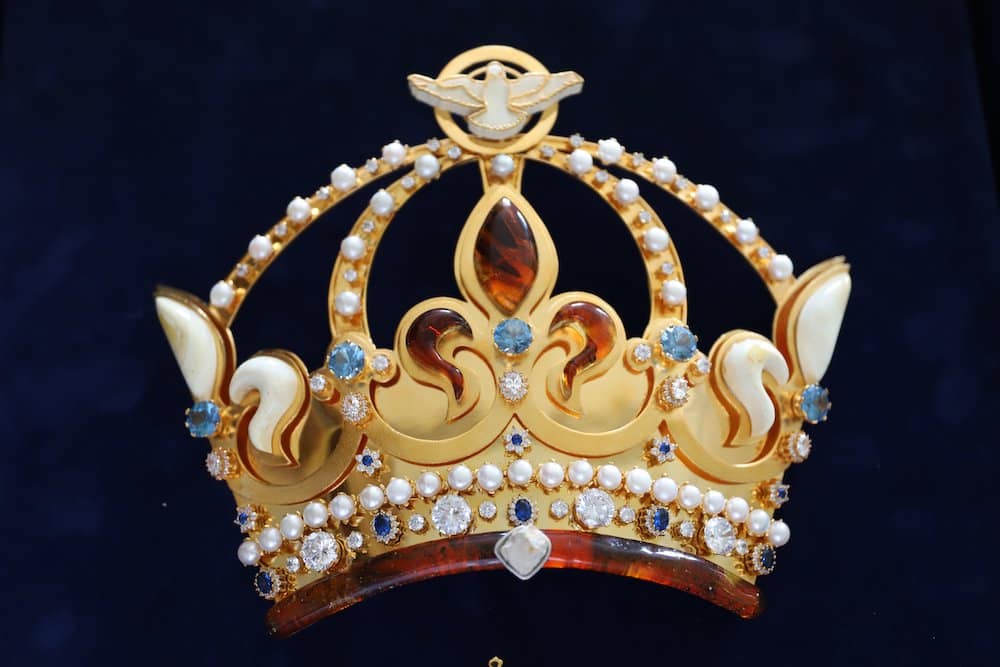
Pilgrims visit and celebrations
The coronation with new crowns drew thousands of pilgrims to Koden sanctuary, which for years was the most important regional destination of pilgrims for the people of the Podlaskie region, called “Podlasie” by Poles. On Aug. 14, an estimated 18,000 people attended Mass in Koden and on Aug. 15, as many as 35,000 may have participated in the anniversary Mass, according to Father Gomulak.
“Slavic brothers cannot fight with each other, cannot kill each other. The hand of Cain has to be stopped,” Cardinal Dziwisz said in a homily Aug. 15, referring to the ongoing Russian invasion in Ukraine. “Enough bloodshed!” he declared. “May Our Lady of Koden be our guide in the road to stop the war, to reconciliation and peace,” Cardinal Dziwisz said.
“Koden is to Podlasie what Jasna Gora is to all of Poland,” Father Krzysztof Borodzien, custodian of the Koden sanctuary, told Polish Catholic news agency KAI.
Jasna Gora is the Marian shrine of the “Black Madonna,” Our Lady of Czestochowa, and is the central destination of Polish national pilgrimages. In 2022, between June 4 and Aug. 14, 50,000 pilgrims marched throughout the country in 139 traditional marching pilgrimages with the longest route leading to Czestochowa from northern Poland, almost 380 miles. Between Aug. 14 and 26, 2022, another 20,000 marched to Our Lady of Czestochowa in 91 organized groups. Overall, in 2022, 2.5 million pilgrims visited Jasna Gora. This year the number may be even higher,according to the Pauline friars of Jasna Gora.
Before the pandemic, up to 300,000 pilgrims visited the Koden sanctuary yearly. With the pandemic and the Russian war against Ukraine not that far away, fewer people have come, but the number has returned to a firm 200,000.
Next to miraculous healings, Our Lady of Koden also is said to heal spiritually. “Many people who visit the miraculous image in the Koden shrine say they have regained their faith,” Father Borodzien said.

